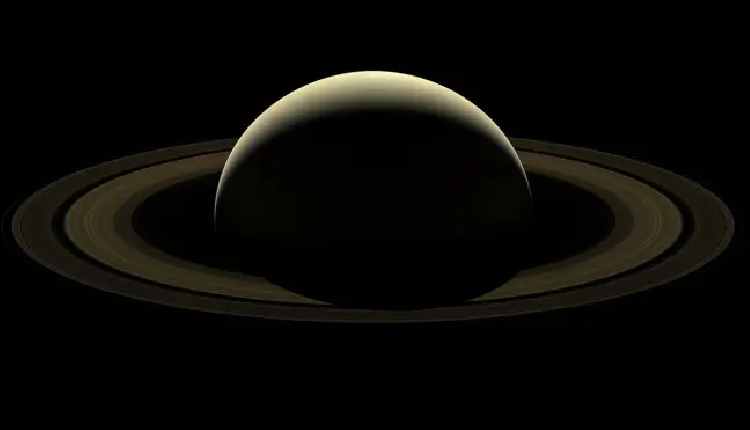London: A team of planetary scientists has found that Saturn’s late northern summer is experiencing a cooling trend, as huge planetary-scale flows of air have reversed direction as autumn approaches.
The new observations, based on an analysis of new images taken by the powerful James Webb Space Telescope (JWST), also provided a last glimpse of Saturn’s north pole, with its enormous warm vortex filled with hydrocarbon gases, before the pole begins to recede into the darkness of polar winter.
The findings, published in Journal of Geophysical Research: Planets by the University of Leicester researchers, provides new insights into the changing seasons on the massive outer planet, famous for its icy rings.
Like Earth, Saturn has an axial tilt and experiences seasons in the same way. However, Saturn takes 30 years to orbit the sun, so the seasons last for 7.5 Earth-years.
Northern-hemisphere summer on both worlds is now coming to an end.
While Earth is heading for the northern autumn equinox in September, Saturn is heading for the northern autumn equinox in 2025, which means the north poles of both planets are heading for extended periods of polar winter.
“The quality of the new data from JWST is simply breath-taking — in one short set of observations, we’ve been able to continue the legacy of the Cassini mission into a completely new Saturnian season, watching how the weather patterns and atmospheric circulation respond to the changing sunlight,” said Professor Leigh Fletcher, from the varsity’s School of Physics and Astronomy.
In the image, created by combining just a few of the wavelengths observed by MIRI on JWST, the bright thermal emission from the north pole stands out in blue.
The warm 1500-km wide north polar cyclone (NPC), which was first observed by the Cassini mission, can be seen at the north pole.
This is surrounded by a broader region of warm gases called the north-polar stratospheric vortex (NPSV), which formed in Saturnian spring and has persisted throughout its northern summer.
These are warm vortices high in the stratosphere, heated by the sun’s warmth during Saturn’s long summer season.
As autumn equinox approaches in 2025, the north polar stratospheric vortex will begin cooling down and will disappear as the northern hemisphere recedes into the darkness of autumn.
“JWST can see in wavelengths of light that were inaccessible to any previous spacecraft, producing an exquisite dataset that whets the appetite for the years to come. This work on Saturn is just the first of a programme of observations of all four giant planets, and JWST is providing a capability beyond anything we’ve had in the past — if we can get so many new findings from a single observation of a single world, imagine what discoveries await?” Fletcher said.
(IANS)














